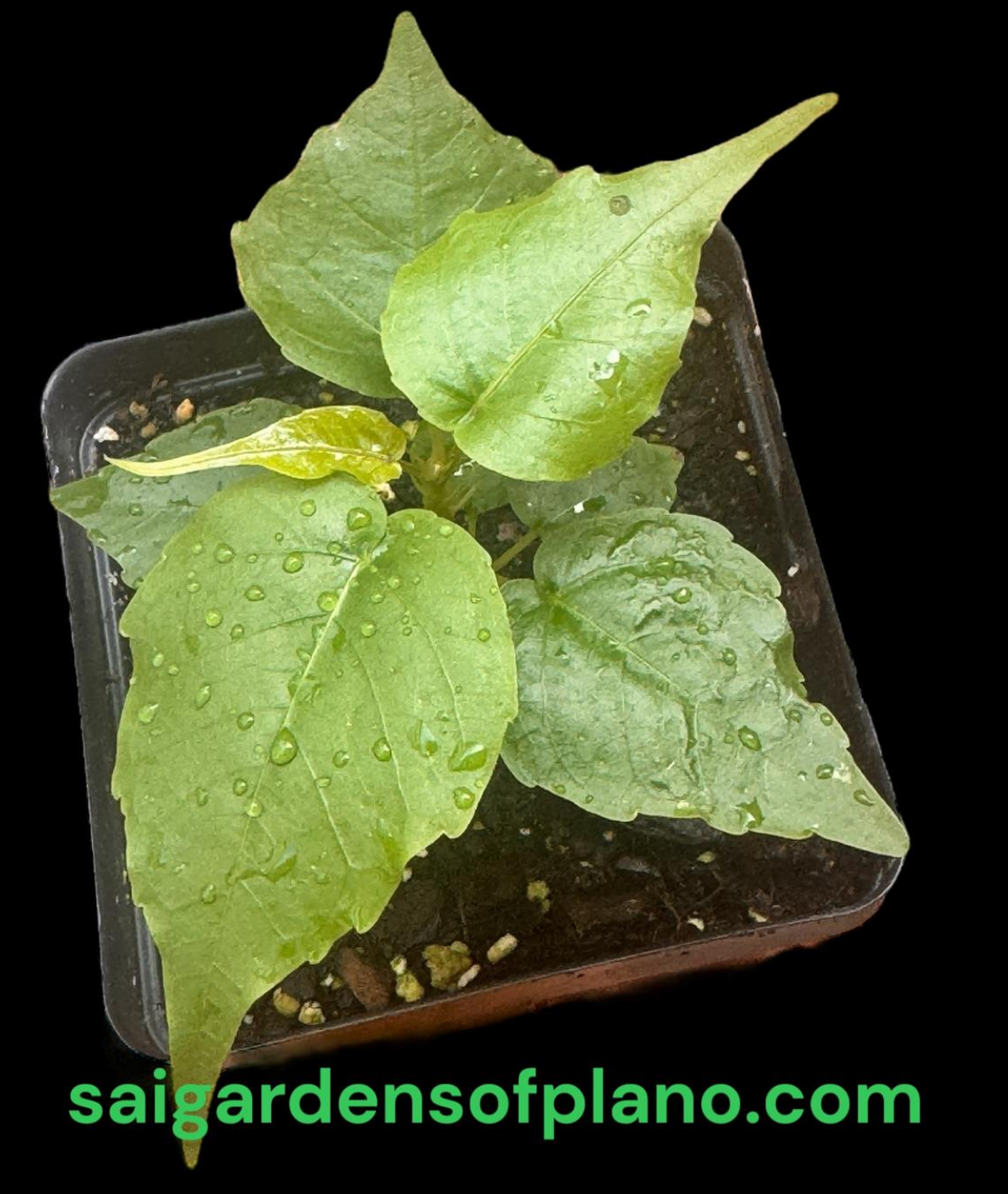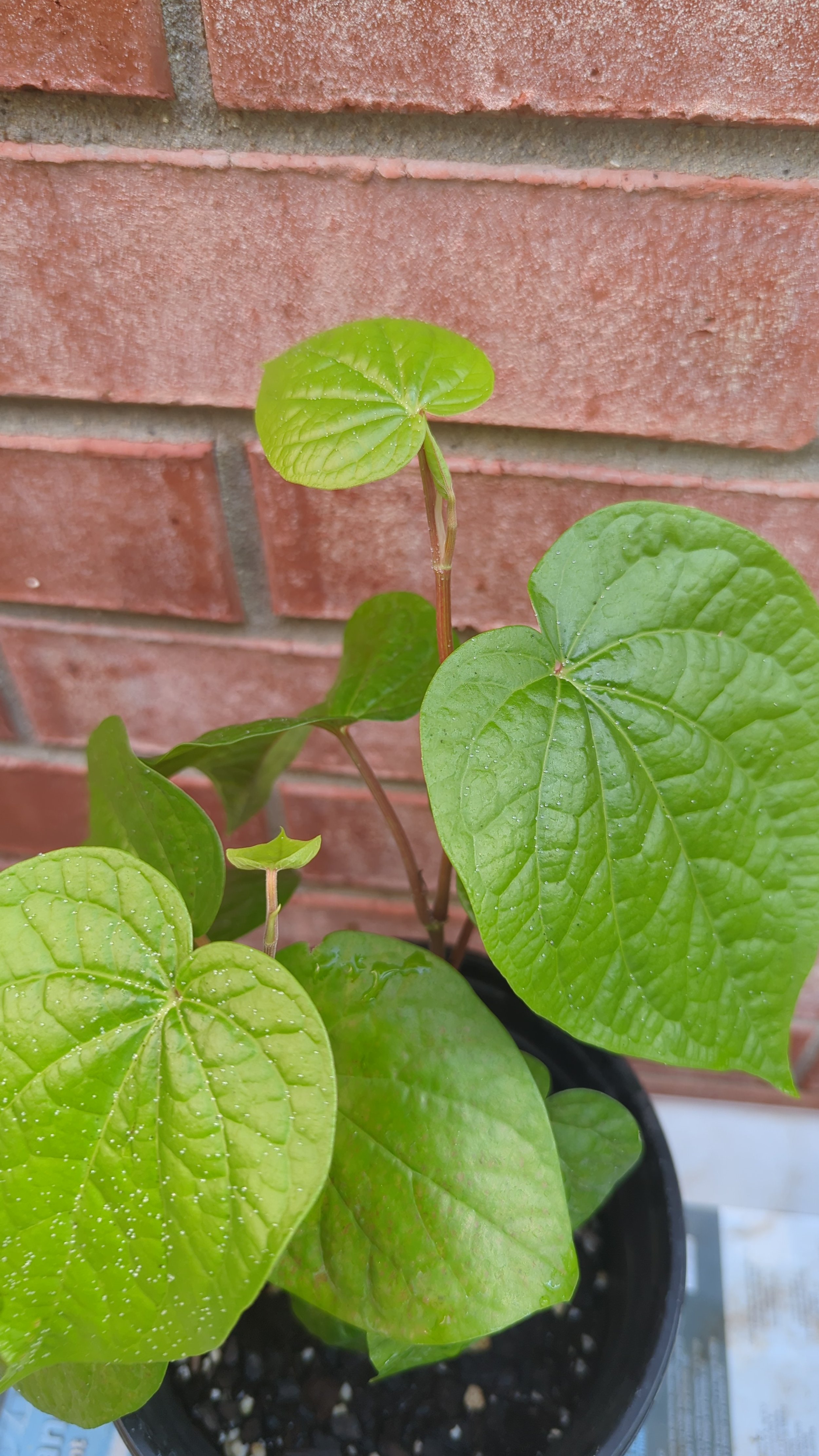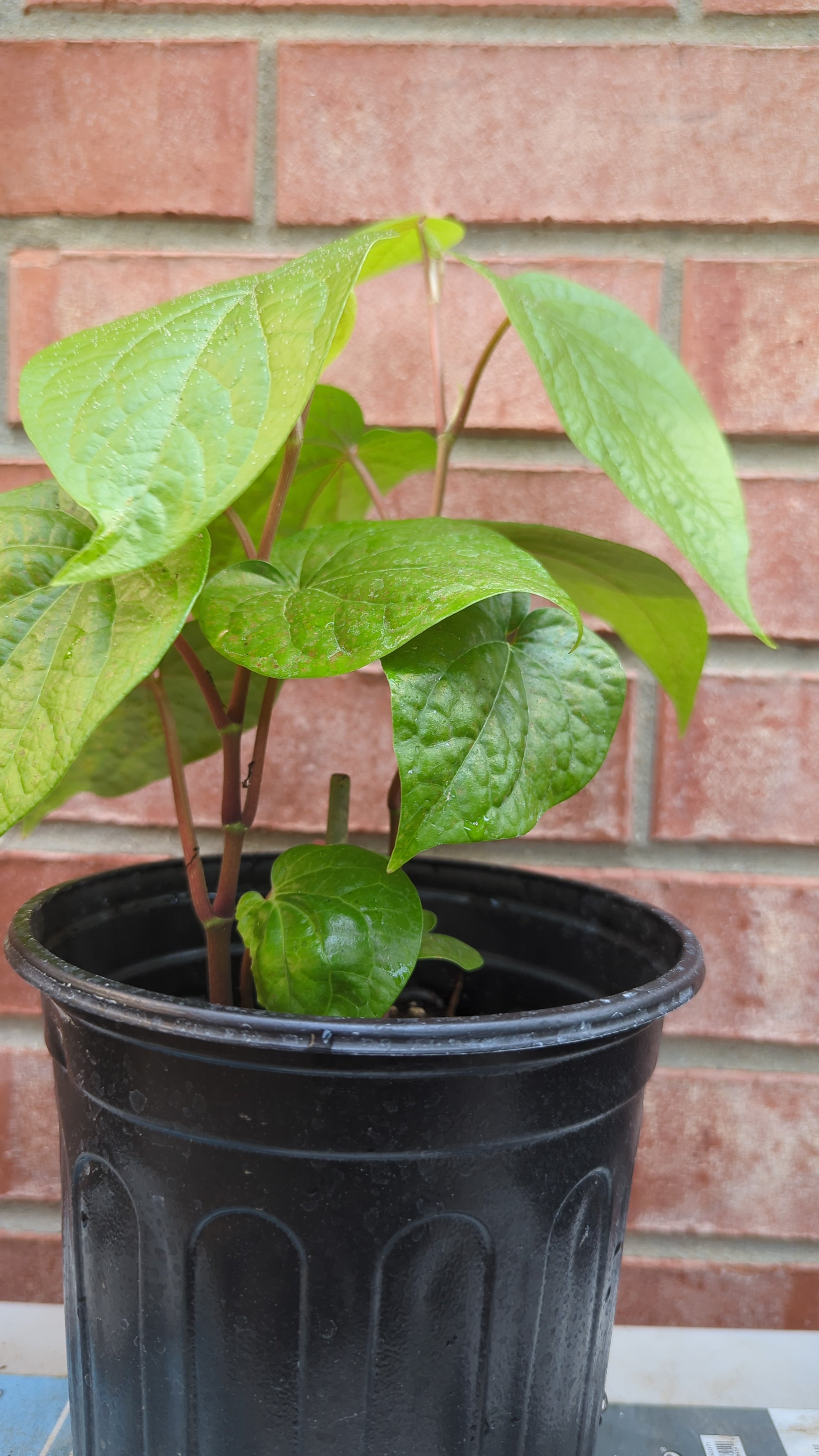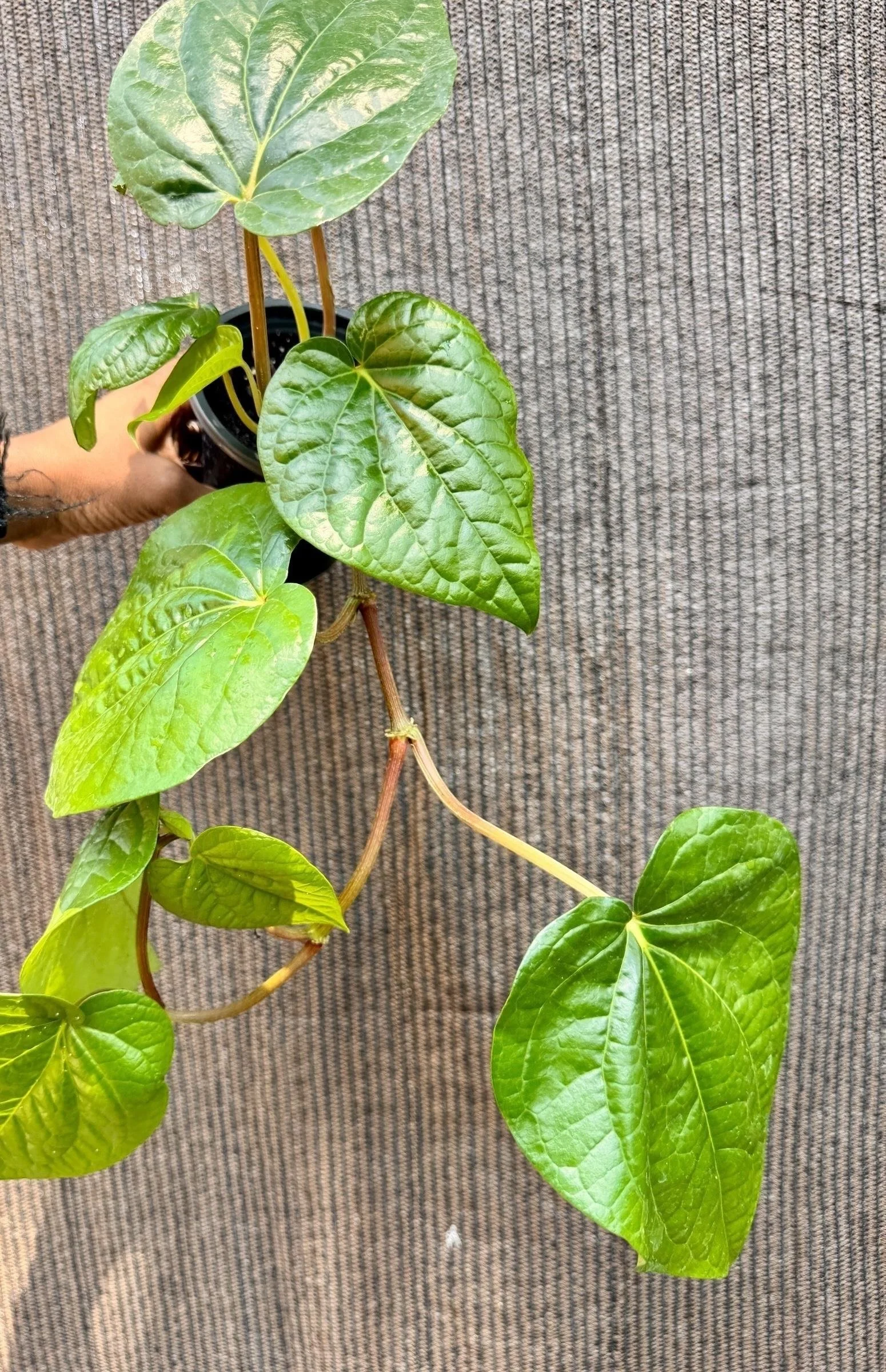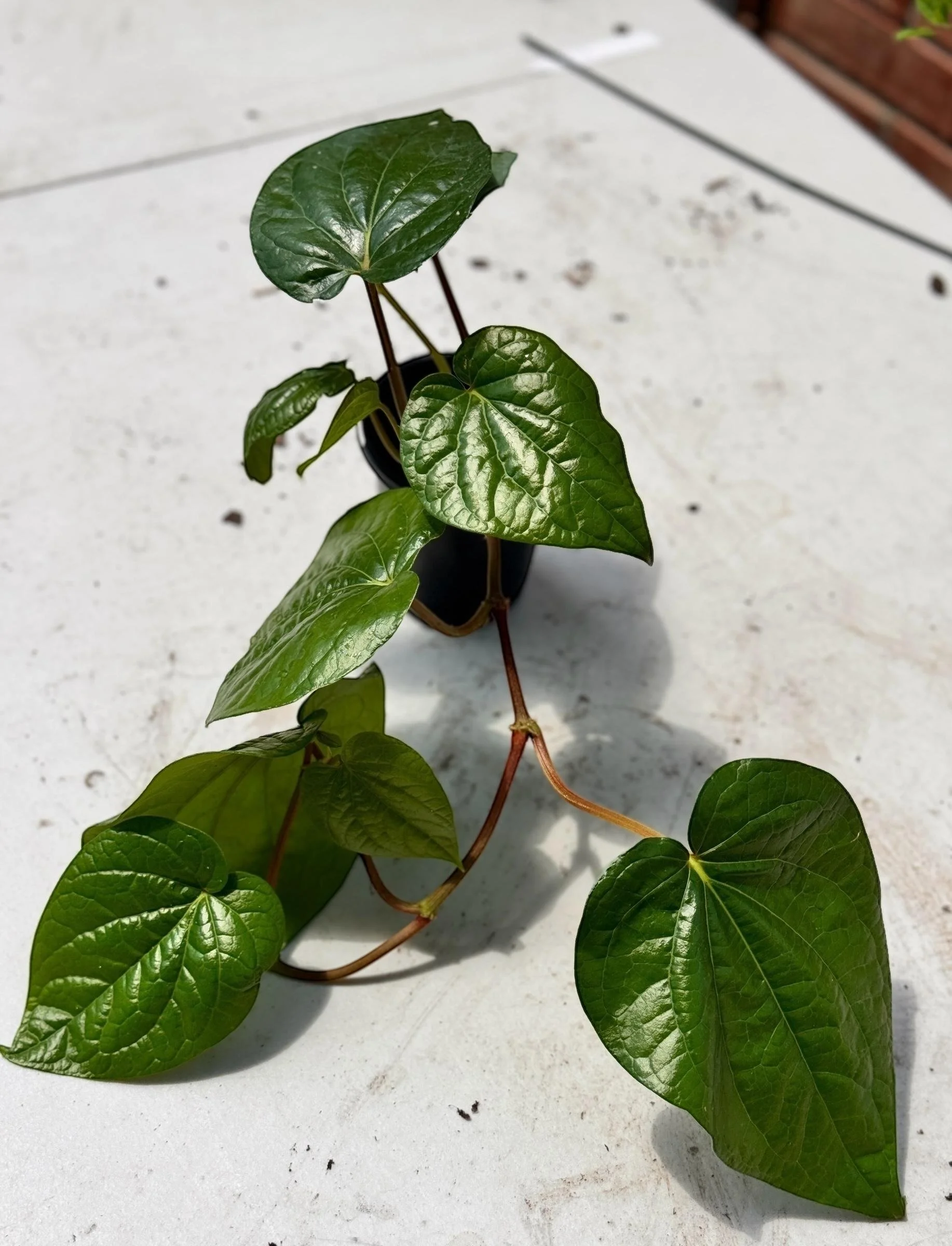 Image 1 of 5
Image 1 of 5

 Image 2 of 5
Image 2 of 5

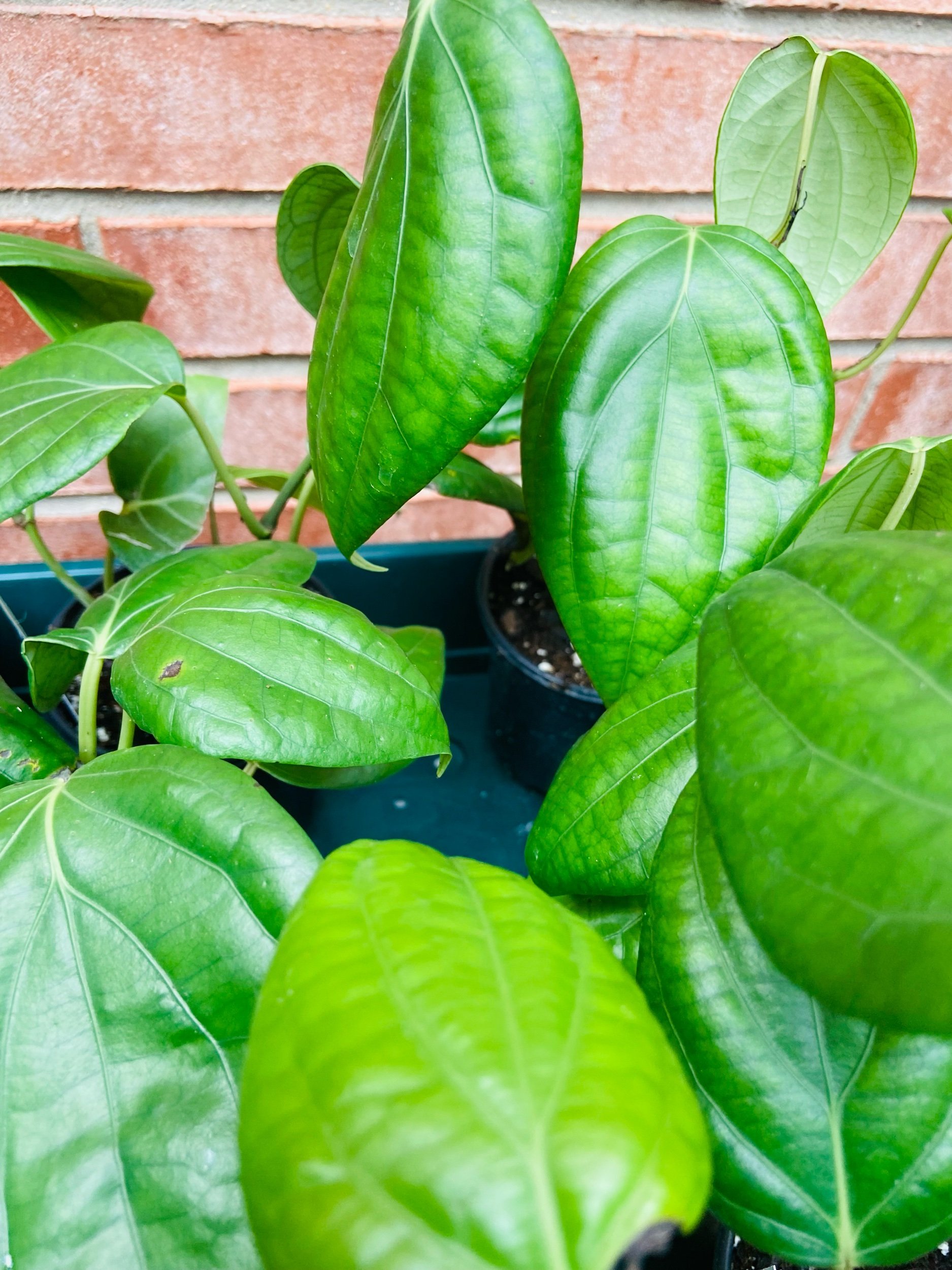 Image 3 of 5
Image 3 of 5

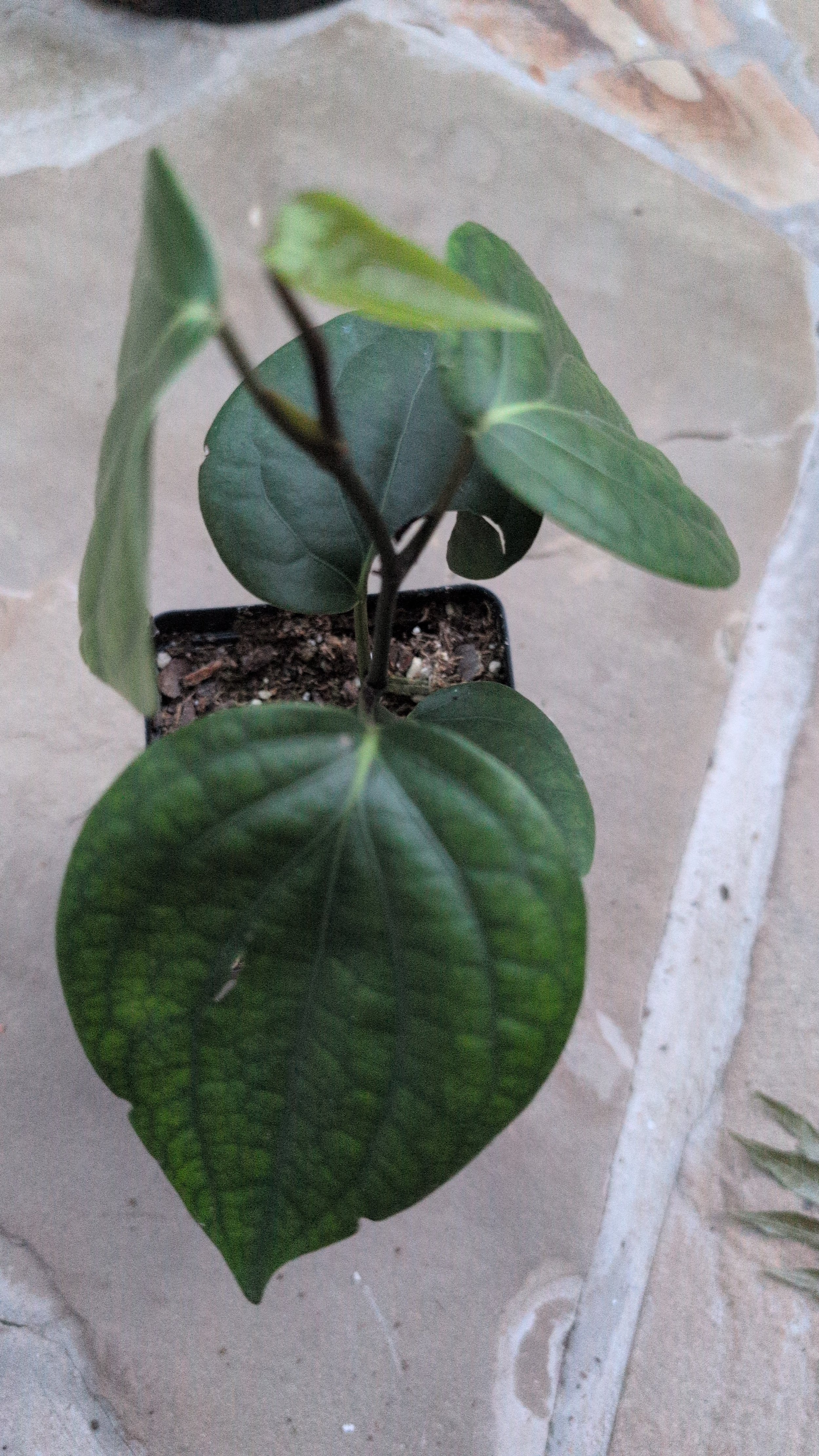 Image 4 of 5
Image 4 of 5

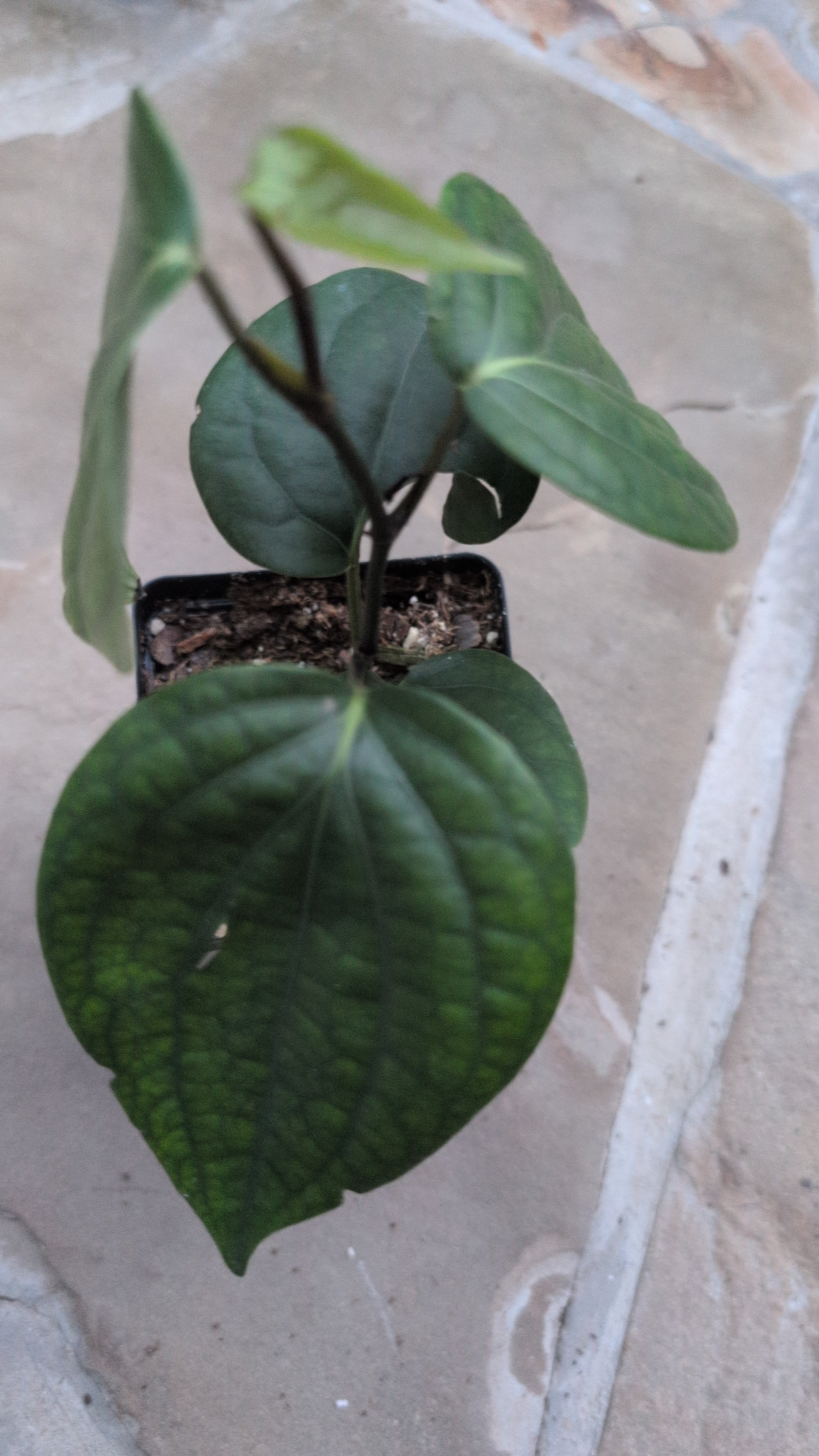 Image 5 of 5
Image 5 of 5






Black Pepper Plant
Healthy black pepper plants. Price indicated is for one plant. Prefers partial shade conditions . Can also be grown indoors with bright light and average humidity conditions. Prefers well draining soil and moist watering conditions. 4 inch container.
SAI GARDENS OF PLANO
BLACK PEPPER PLANT / PEPPER CORNS CARE INSTRUCTIONS
Light: Partial sun or shade. Pepper corns should be grown in partial sun.
Temperature: Maintain indoor temperatures above 65°. As they are warm growing plants, growth will stop when temperatures are cool.
Humidity: Preferably 50% or higher; however, they will tolerate lower levels with no harm.
Watering: Bring soil to a state of visual dryness between watering. When watering, thoroughly saturate soil until a little water runs out of the bottom of the pot. Growing in a clay pot will help maintain a healthy root system.
Fertilizer: They are moderate to light feeders. Fertilize once every week or two with ¼ tsp of fertilizer per gallon of water. Use a balanced fertilizer like a 15-15-15 or a blooming fertilizer like a 7-9-5. Discontinue feeding during the winter.
Pruning: They are vining in habit; prune only to maintain form and control size.
Insects and Disease: No known problems with insects. They are susceptible to root diseases. It is important to maintain warm temperatures and accurate watering to circumvent this problem. They form small beads on the backsides of the leaves and stems. In time, there appear tiny black dots. This is normal physiology and not an insect.
Comments Pepper corns is a slow growing vine. Young plants take several years to start flowering and fruiting. They grow best under bright sunlight and warm temperatures. Flowering and pepper corn production is increased by growing under higher light.
Healthy black pepper plants. Price indicated is for one plant. Prefers partial shade conditions . Can also be grown indoors with bright light and average humidity conditions. Prefers well draining soil and moist watering conditions. 4 inch container.
SAI GARDENS OF PLANO
BLACK PEPPER PLANT / PEPPER CORNS CARE INSTRUCTIONS
Light: Partial sun or shade. Pepper corns should be grown in partial sun.
Temperature: Maintain indoor temperatures above 65°. As they are warm growing plants, growth will stop when temperatures are cool.
Humidity: Preferably 50% or higher; however, they will tolerate lower levels with no harm.
Watering: Bring soil to a state of visual dryness between watering. When watering, thoroughly saturate soil until a little water runs out of the bottom of the pot. Growing in a clay pot will help maintain a healthy root system.
Fertilizer: They are moderate to light feeders. Fertilize once every week or two with ¼ tsp of fertilizer per gallon of water. Use a balanced fertilizer like a 15-15-15 or a blooming fertilizer like a 7-9-5. Discontinue feeding during the winter.
Pruning: They are vining in habit; prune only to maintain form and control size.
Insects and Disease: No known problems with insects. They are susceptible to root diseases. It is important to maintain warm temperatures and accurate watering to circumvent this problem. They form small beads on the backsides of the leaves and stems. In time, there appear tiny black dots. This is normal physiology and not an insect.
Comments Pepper corns is a slow growing vine. Young plants take several years to start flowering and fruiting. They grow best under bright sunlight and warm temperatures. Flowering and pepper corn production is increased by growing under higher light.







